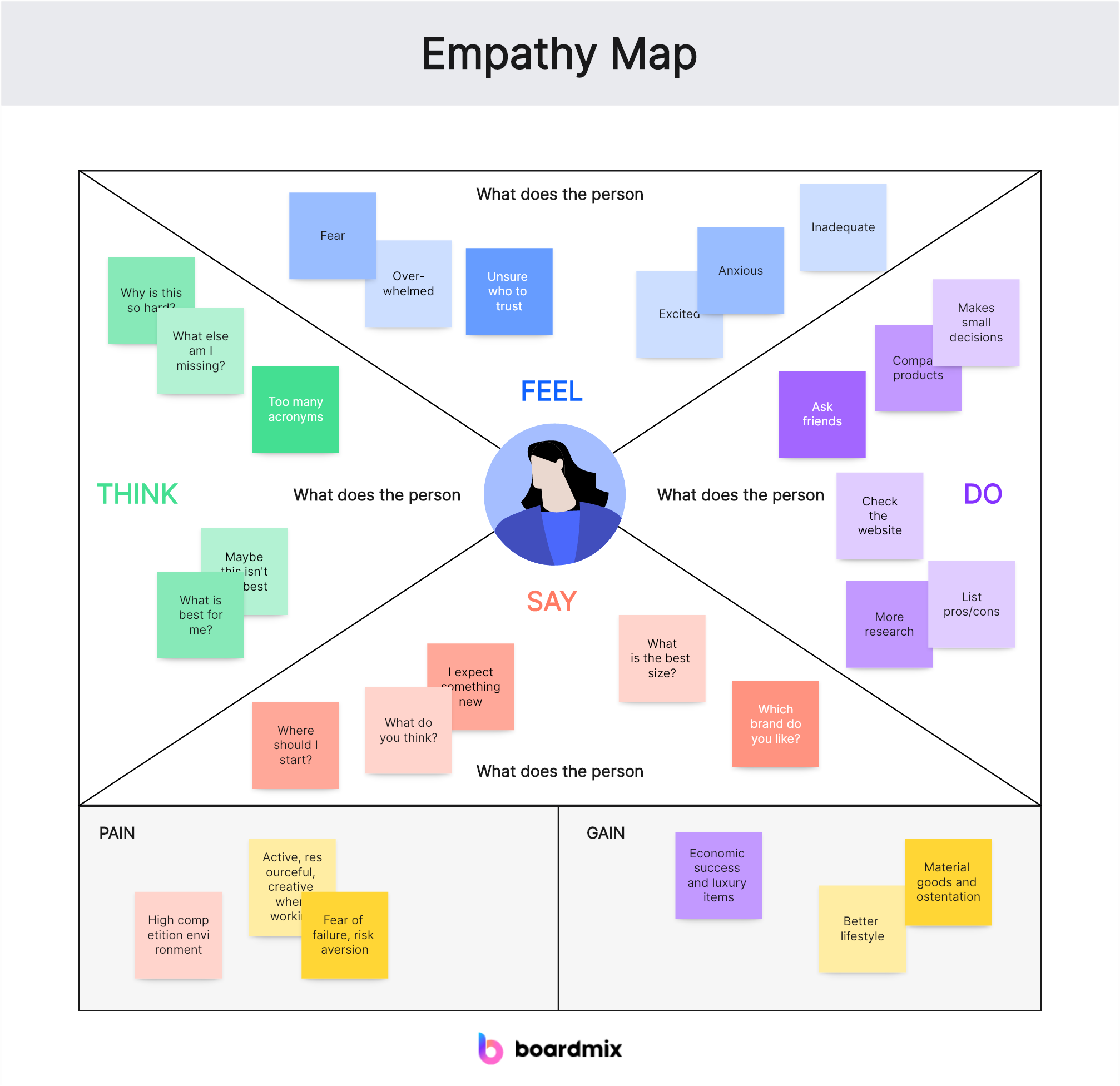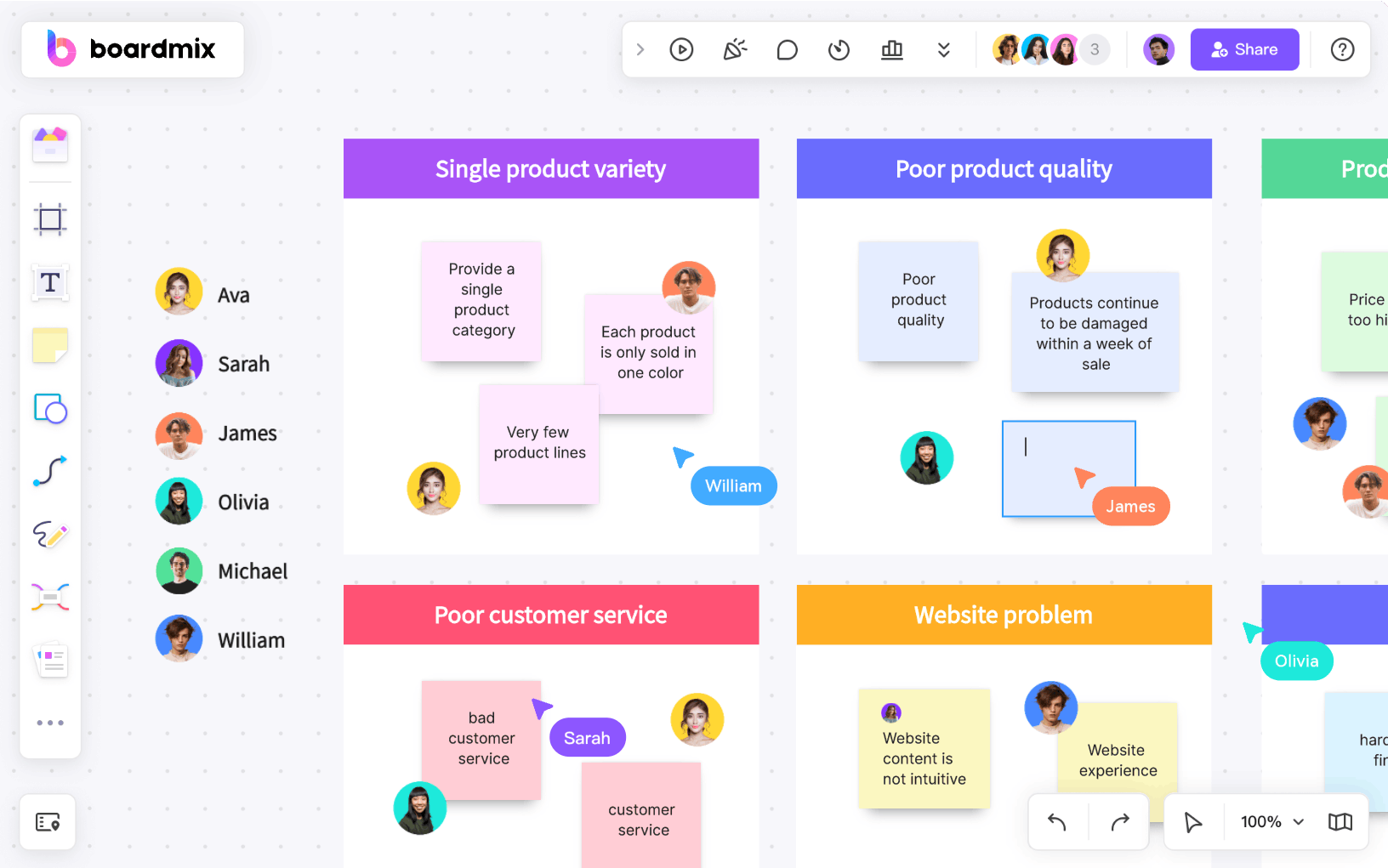Empathy is a crucial skill that fosters understanding and connection between individuals. In an educational setting, teachers and educators often strive to comprehend the experiences of their students to create a more inclusive and effective learning environment. One powerful tool for achieving this understanding is the empathy map, a visual representation that helps educators delve into the thoughts, feelings, and experiences of students. In this article, we will explore the concept of empathy maps and provide a practical example tailored for students.

Part 1. The Importance of Empathy in Education
Empathy is the ability to understand and share the feelings of another. In the context of education, it plays a pivotal role in building strong teacher-student relationships, promoting a positive classroom atmosphere, and enhancing the overall learning experience. By developing empathy, educators can gain insights into the unique challenges and perspectives of their students, ultimately leading to more effective teaching strategies.
Part 2. Empathy Map Overview
An empathy map is a visual tool that assists educators in gaining a deeper understanding of their students' experiences. It typically consists of four quadrants, each representing a different aspect of the student's world: Think and Feel, See, Hear, and Do. By filling out these quadrants with specific details, educators can create a comprehensive snapshot of the student's emotional and cognitive landscape.
Part 3. How Do Empathy Maps Help Teachers?
Empathy maps serve as invaluable tools for teachers by providing a structured approach to understanding and connecting with their students on a deeper level. Here are several ways in which empathy maps can greatly benefit educators:
Enhanced Understanding of Student Needs: Empathy maps allow teachers to explore the thoughts, feelings, and experiences of their students. By gaining insights into the challenges and concerns students may be facing, educators can tailor their teaching strategies to better meet individual needs.
Improved Communication: Understanding the auditory aspects of the student experience through empathy maps helps teachers refine their communication methods. This can involve adjusting tone, pace, or language to ensure that instructions and information are effectively conveyed to all students.
Creation of a Supportive Learning Environment: By identifying external factors in the students' environment (See quadrant), teachers can create a more conducive learning environment. This might involve rearranging classroom layouts, incorporating visual aids, or addressing external distractions to enhance the overall learning experience.
Tailored Teaching Strategies: The information gathered from empathy maps in the "Do" quadrant helps teachers identify specific actions and behaviors of their students. This insight allows educators to develop teaching strategies that resonate with individual learning styles, ultimately increasing engagement and comprehension.
Building Stronger Teacher-Student Relationships:
Empathy maps foster empathy, which is crucial for building strong connections between teachers and students. By demonstrating an understanding of students' thoughts and feelings, educators can create a more supportive and trusting relationship, contributing to a positive classroom atmosphere.
Targeted Support and Interventions: The insights gained from empathy maps enable teachers to identify areas where students may need additional support. Whether it's addressing academic challenges or providing emotional support, educators can implement targeted interventions to help students thrive.
Promotion of Inclusivity: Empathy maps highlight the diverse experiences of students, promoting inclusivity in the classroom. Teachers can use this information to create a learning environment that respects and celebrates individual differences, fostering a sense of belonging for all students.
Personalized Learning Experiences: Armed with a deep understanding of students' unique needs, teachers can personalize learning experiences to cater to diverse learning styles and preferences. This customization enhances student engagement and increases the effectiveness of the educational process.
Proactive Problem Solving: Identifying potential challenges through empathy maps allows teachers to proactively address issues before they escalate. This can involve preemptive communication with students, adjusting teaching methods, or collaborating with support services to ensure a smoother learning experience.
In conclusion, empathy maps empower teachers to go beyond the curriculum and truly connect with their students. By fostering a deeper understanding of the student experience, educators can create a positive, inclusive, and effective learning environment that sets the stage for academic success and personal growth.
Part 4. Empathy Map Example for Students
Think and Feel:
In this quadrant, educators aim to uncover the internal thoughts and emotions of students. For example, students might be thinking about upcoming exams, social relationships, or personal challenges. By understanding these thoughts and feelings, teachers can tailor their approach to address specific concerns and provide appropriate support.
Example: Sarah, a high school student, might be feeling overwhelmed by the pressure of balancing academic responsibilities and extracurricular activities. She may be anxious about her performance in math class and concerned about meeting her parents' expectations.
See:
This quadrant explores the external environment of the student. It includes aspects such as their physical surroundings, social interactions, and any visual stimuli that may impact their learning experience. By identifying these external factors, educators can create a more conducive learning environment.
Example: John, a middle school student, may be sitting in a crowded classroom where distractions are abundant. His desk might be cluttered with papers, and the classroom walls may lack visual aids that could enhance his understanding of the subject matter.
Hear:
The Hear quadrant focuses on the auditory aspects of the student's experience. This includes what the student hears from teachers, peers, and even their inner dialogue. Recognizing the auditory stimuli that impact students can help educators refine their communication methods.
Example: Emily, an elementary school student, may be constantly hearing negative comments from her classmates, affecting her self-esteem. Additionally, she may struggle to understand the teacher's instructions during group activities due to background noise in the classroom.
Do:
The Do quadrant captures the actions and behaviors of the student. This includes both observable behaviors and the student's responses to various situations. Understanding what students do in different contexts can guide educators in tailoring instructional methods and interventions.
Example: Tom, a college student, might exhibit procrastination in completing assignments. He may also withdraw from class discussions, indicating a potential lack of confidence in expressing his opinions.
Part 5. Best Empathy Mapping Tool for Students
Boardmix, the ultimate online whiteboard tool, is revolutionizing the way students engage in empathy mapping. With a plethora of intuitive drawing templates at your fingertips, Boardmix makes it easy for students to visualize and understand different perspectives. It's not just an online whiteboard; it's a platform that fosters creativity, collaboration, and critical thinking. Whether you're brainstorming ideas for a project or trying to get inside the mind of a historical figure, Boardmix is the best empathy mapping tool for students.

Key features of Boardmix
Intuitive Drawing Templates: Boardmix offers a wide range of pre-designed templates that make it easy for users to start their brainstorming or mapping process.
Real-Time Collaboration: With Boardmix, teams can work together on the same board simultaneously, fostering real-time collaboration and idea sharing.
Interactive Whiteboard: The interactive whiteboard feature allows users to draw, write, and add images or notes freely, making every session engaging and productive.
Easy Accessibility: As an online tool, Boardmix is accessible from any device with an internet connection, allowing you to work whenever and wherever you want.
Secure Workspace: Boardmix provides a secure workspace where all your ideas and discussions are protected.
Conclusion
Incorporating empathy maps into educational practices enables teachers to step into the shoes of their students and gain a holistic understanding of their experiences. By delving into the Think and Feel, See, Hear, and Do quadrants, educators can develop targeted strategies to address students' needs, ultimately fostering a supportive and enriching learning environment. Empathy maps empower educators to bridge the gap between instructional content and the diverse, individualized experiences of their students, creating a more inclusive and effective educational journey for all.
Unleash your creativity and collaboration potential with Boardmix, the ultimate online whiteboard tool. With our intuitive drawing templates and real-time collaboration features, we make empathy mapping and brainstorming sessions more engaging and productive than ever before. Don't just take our word for it - try Boardmix today and experience a new level of interactive learning.








